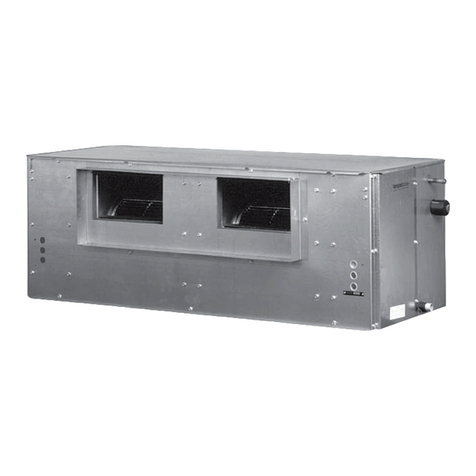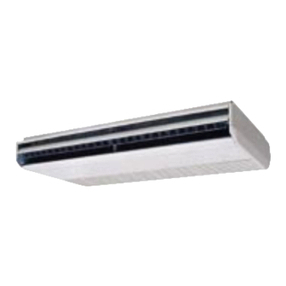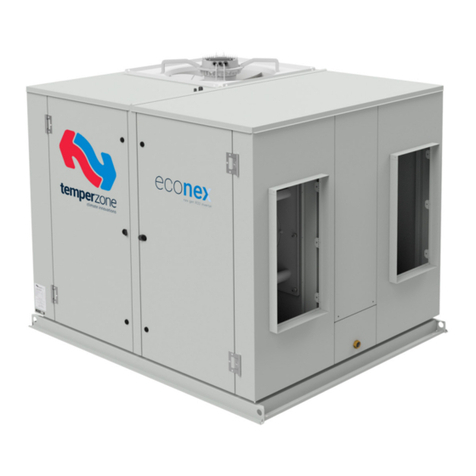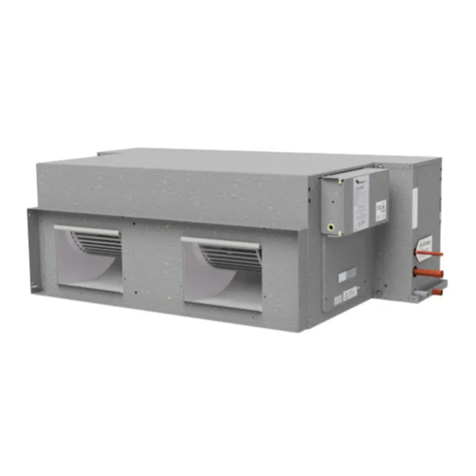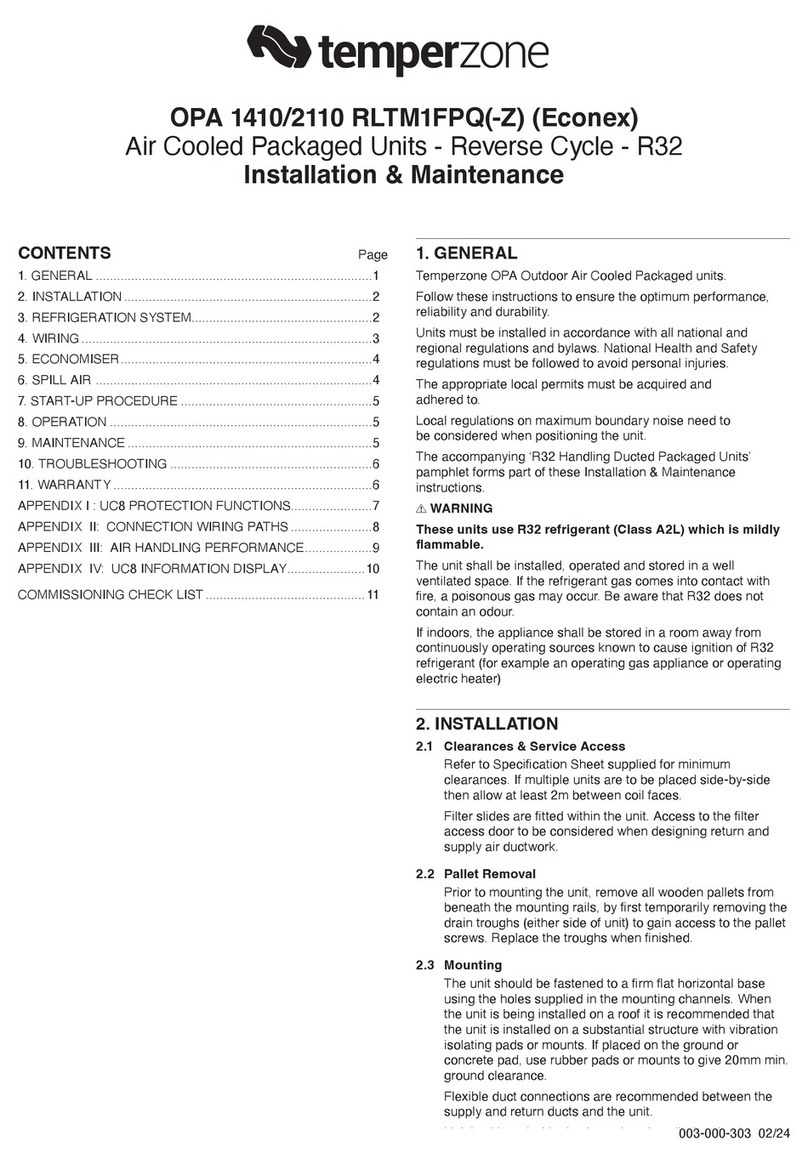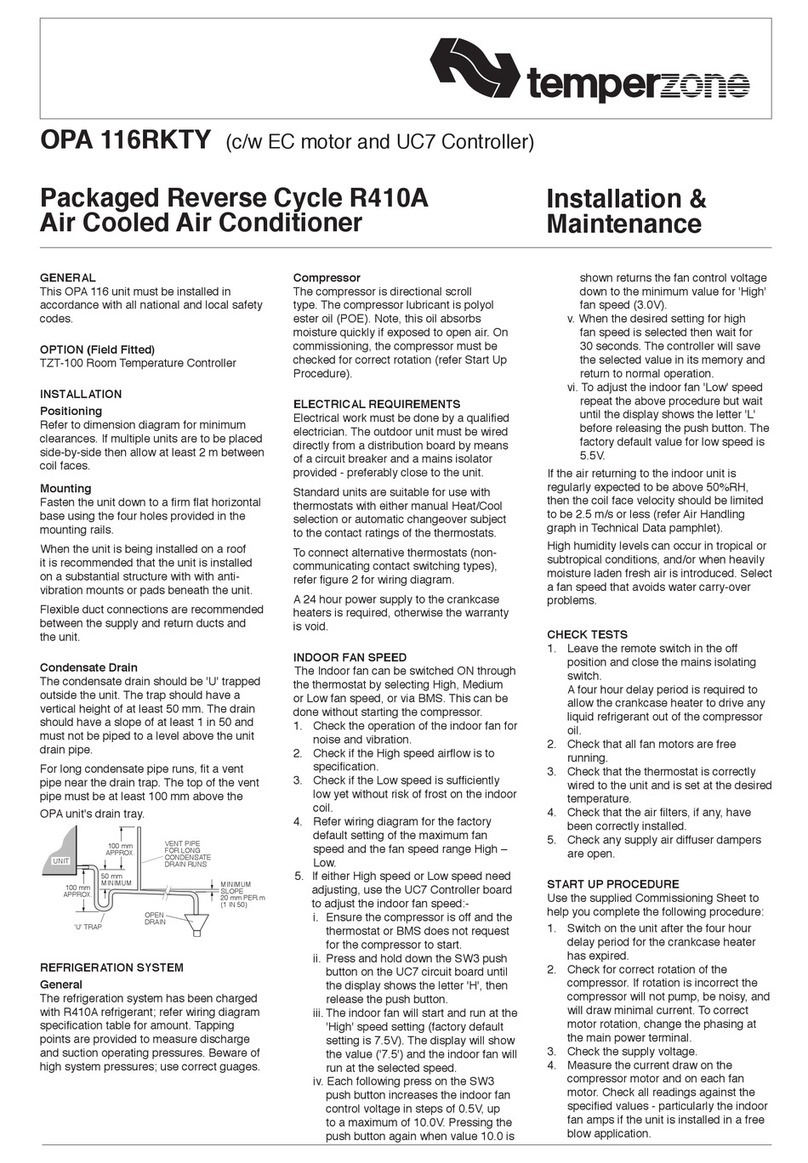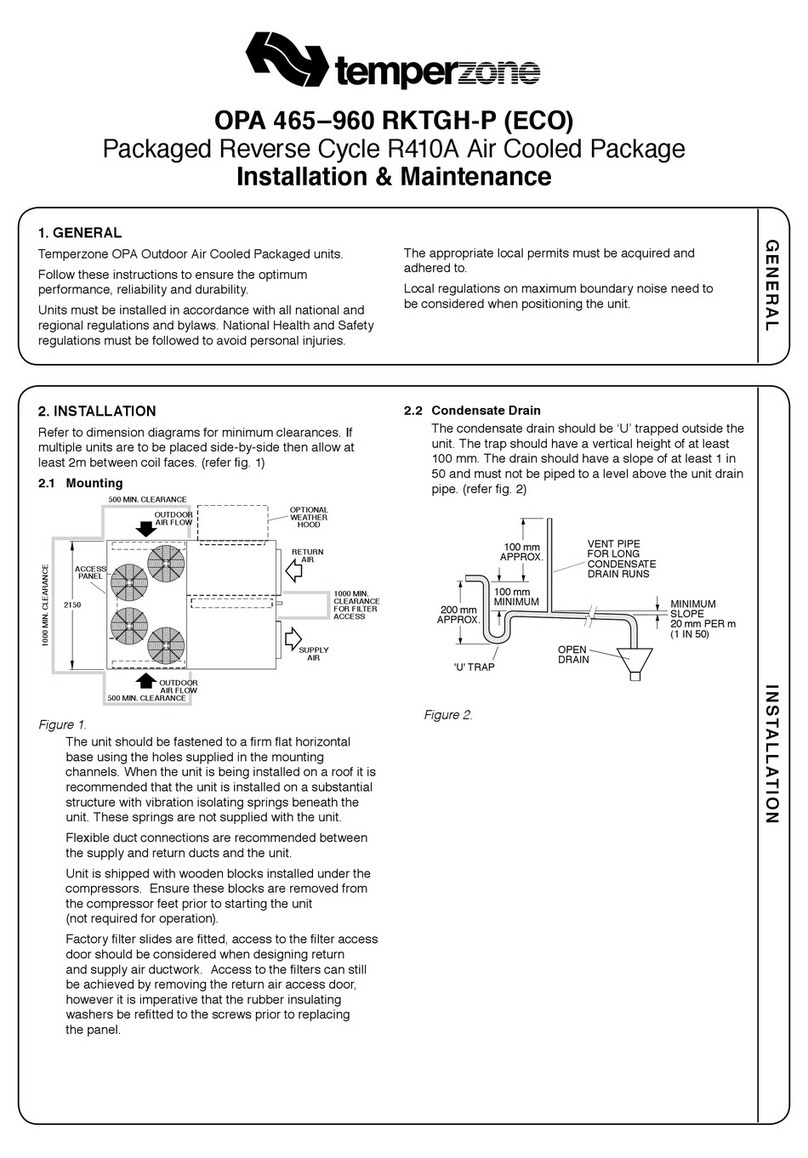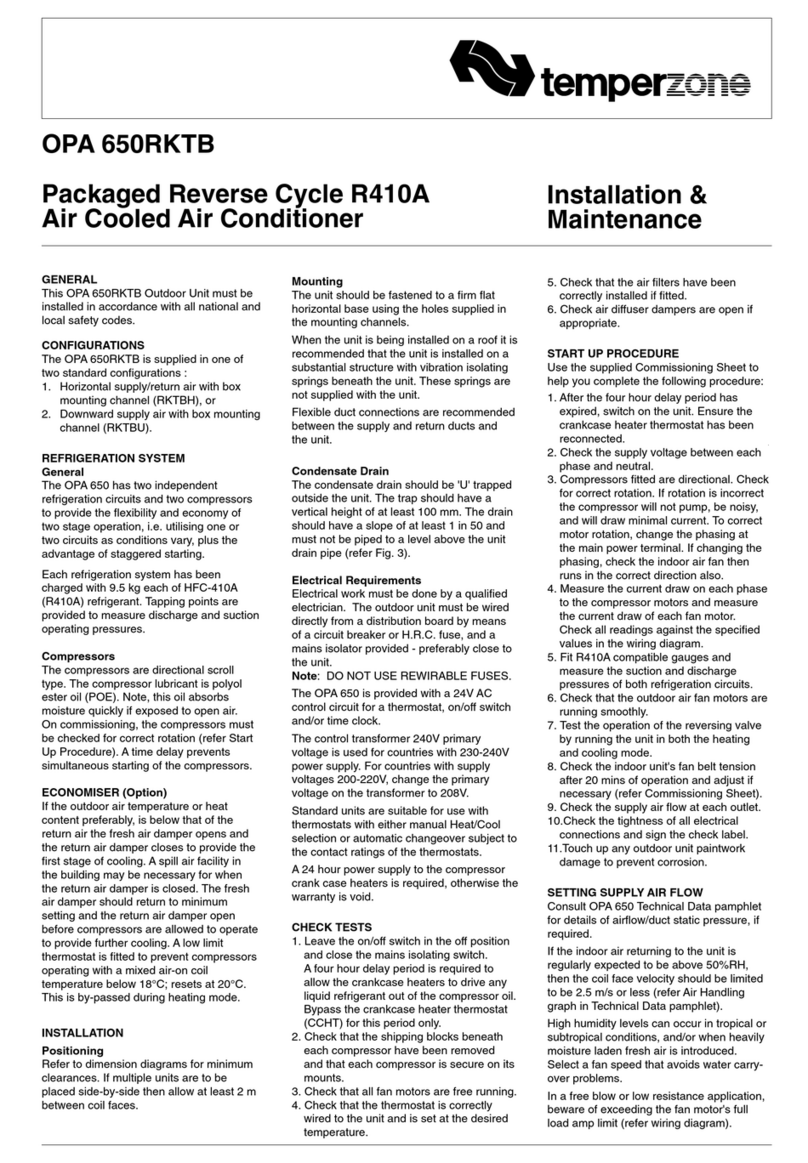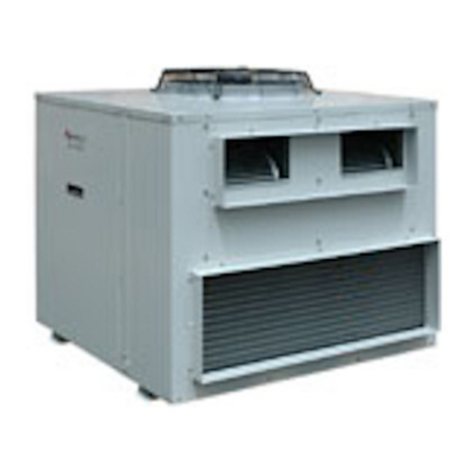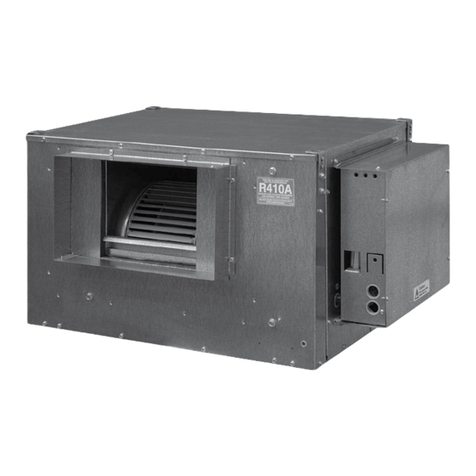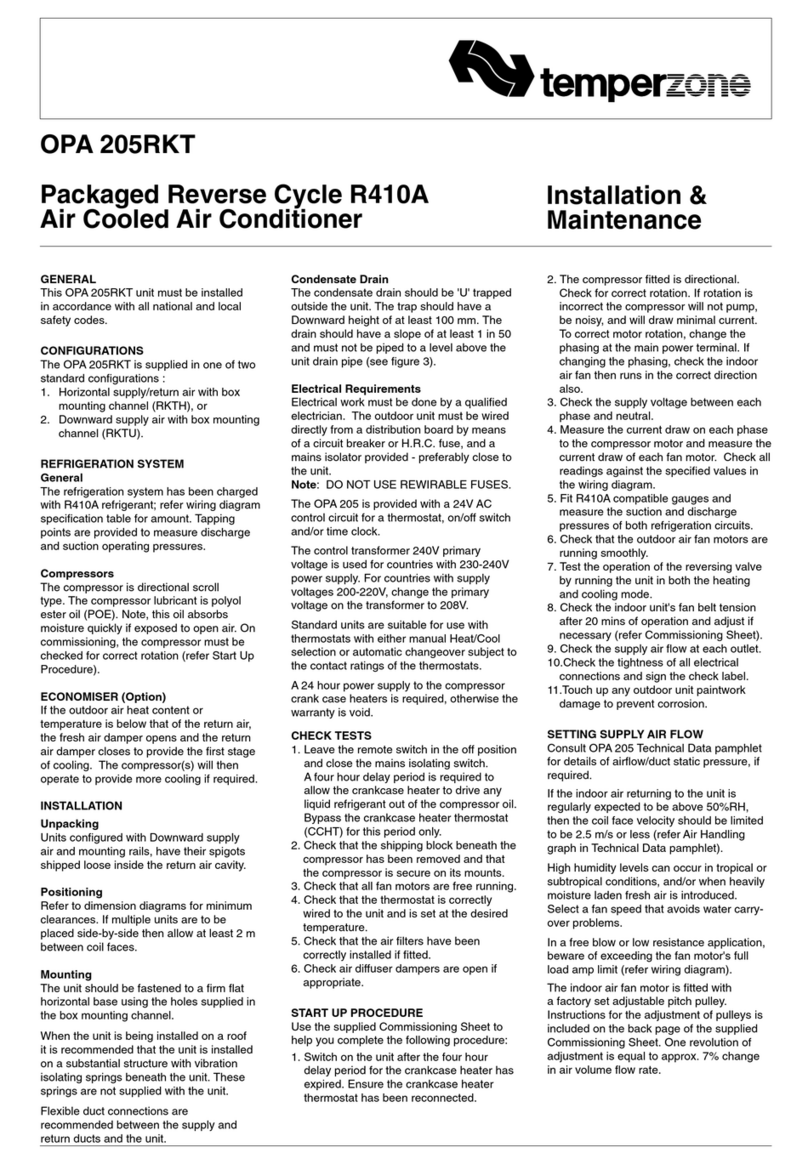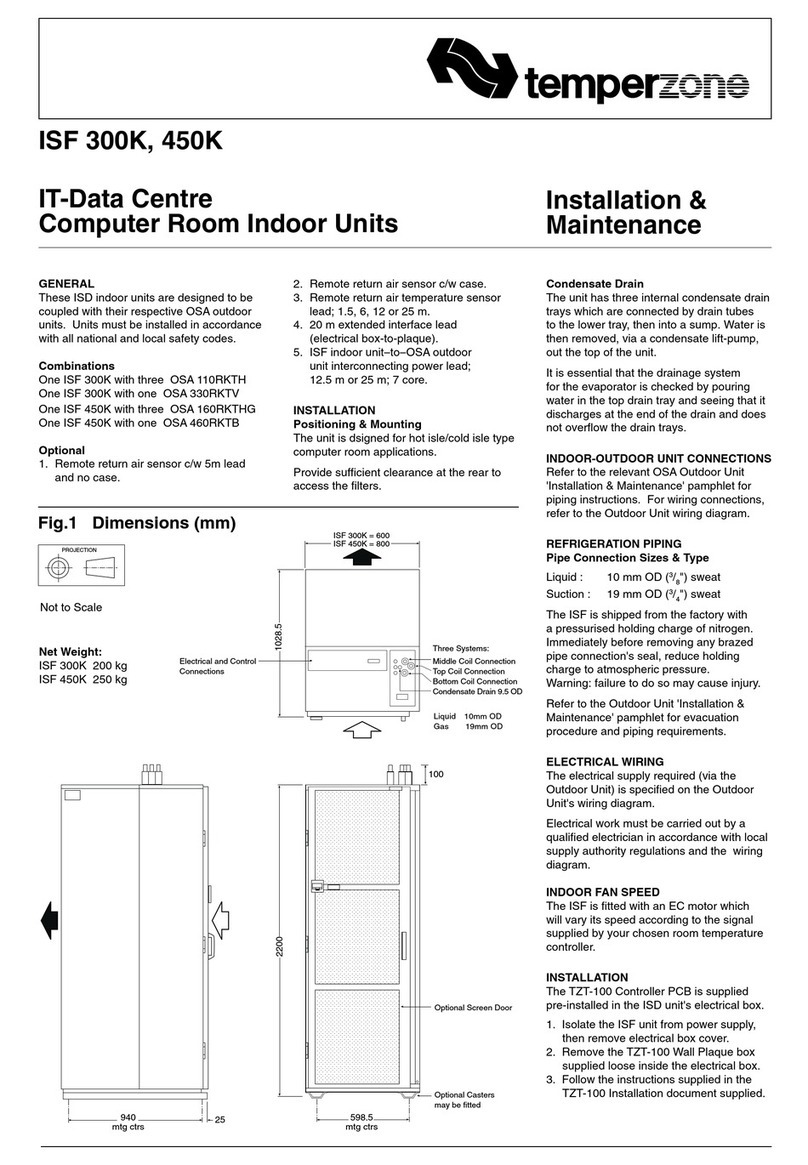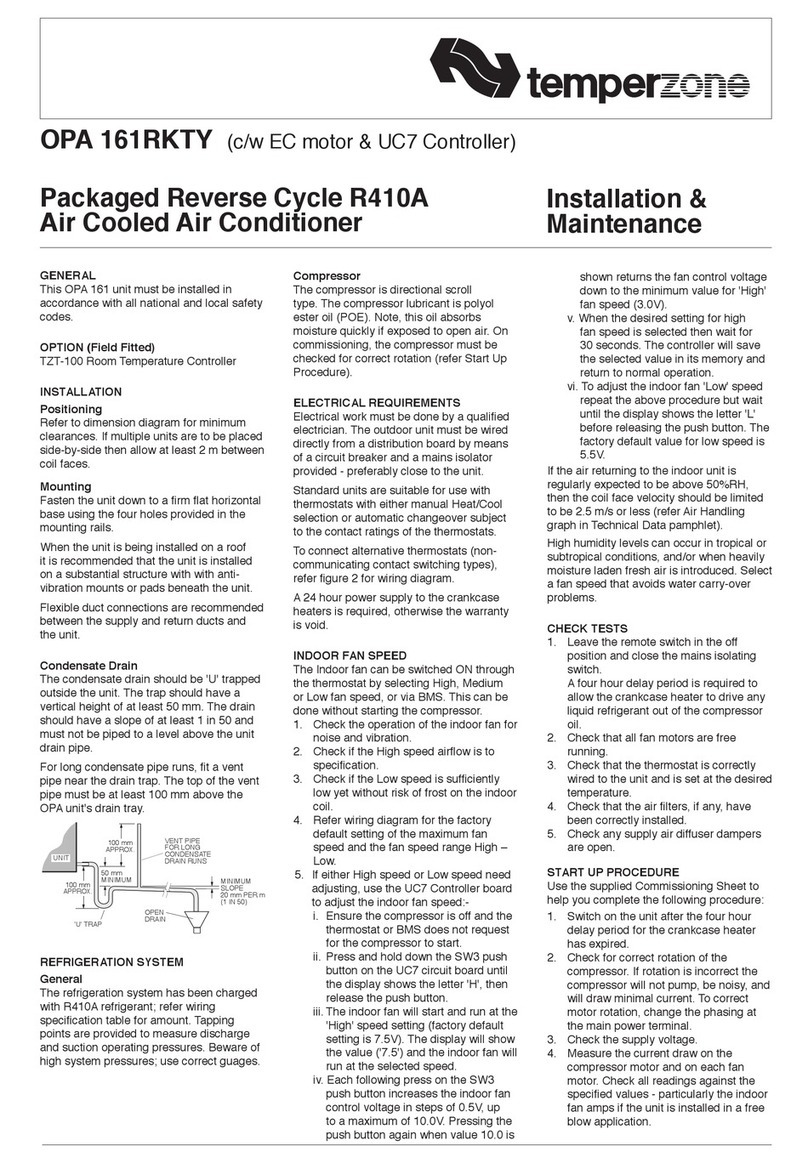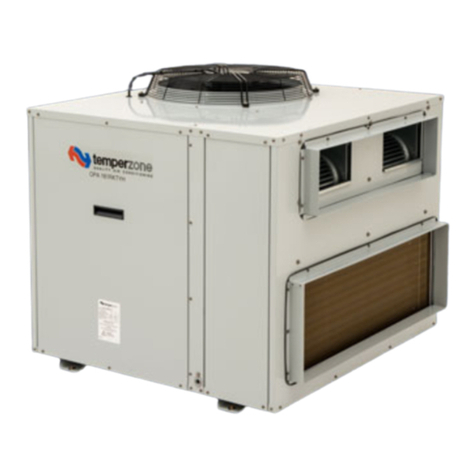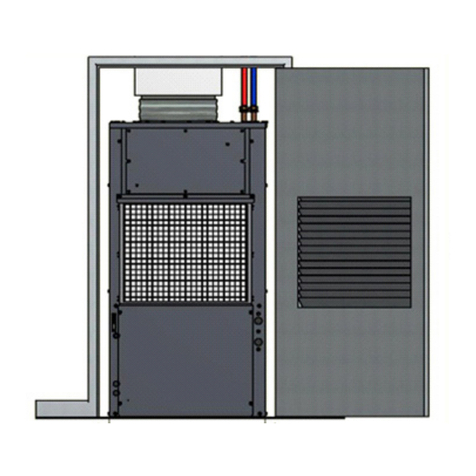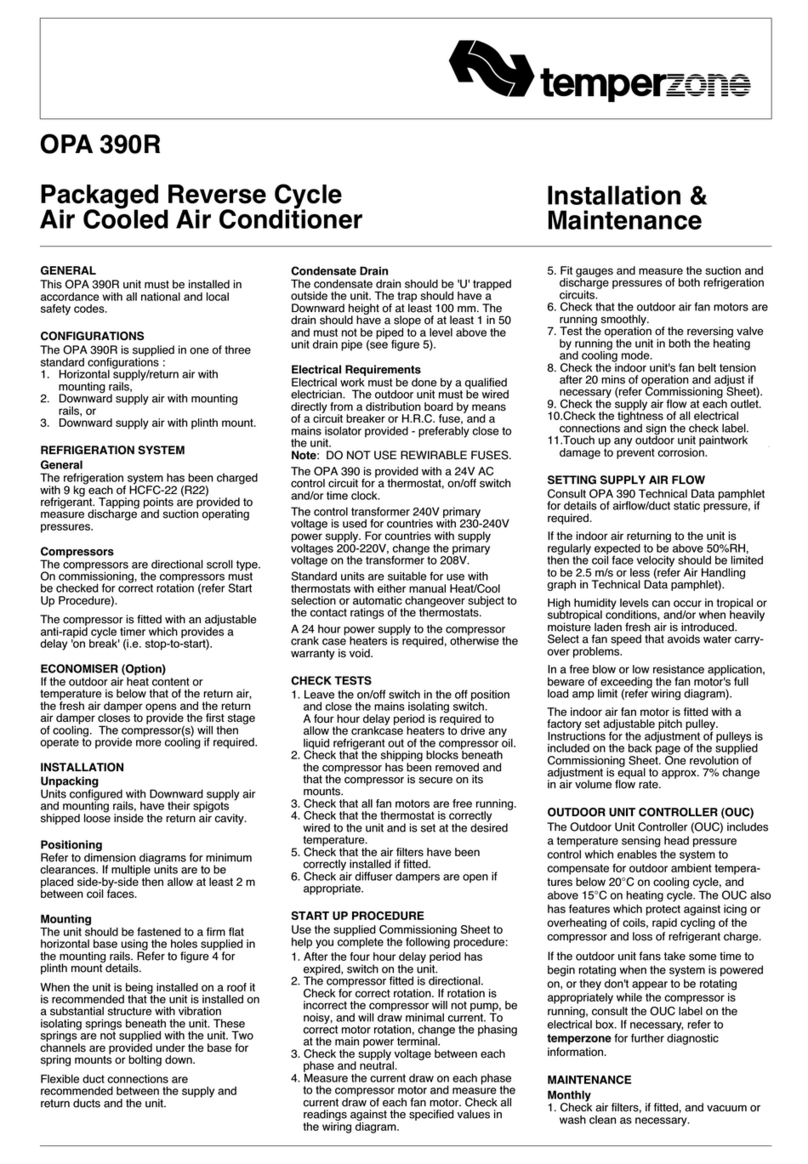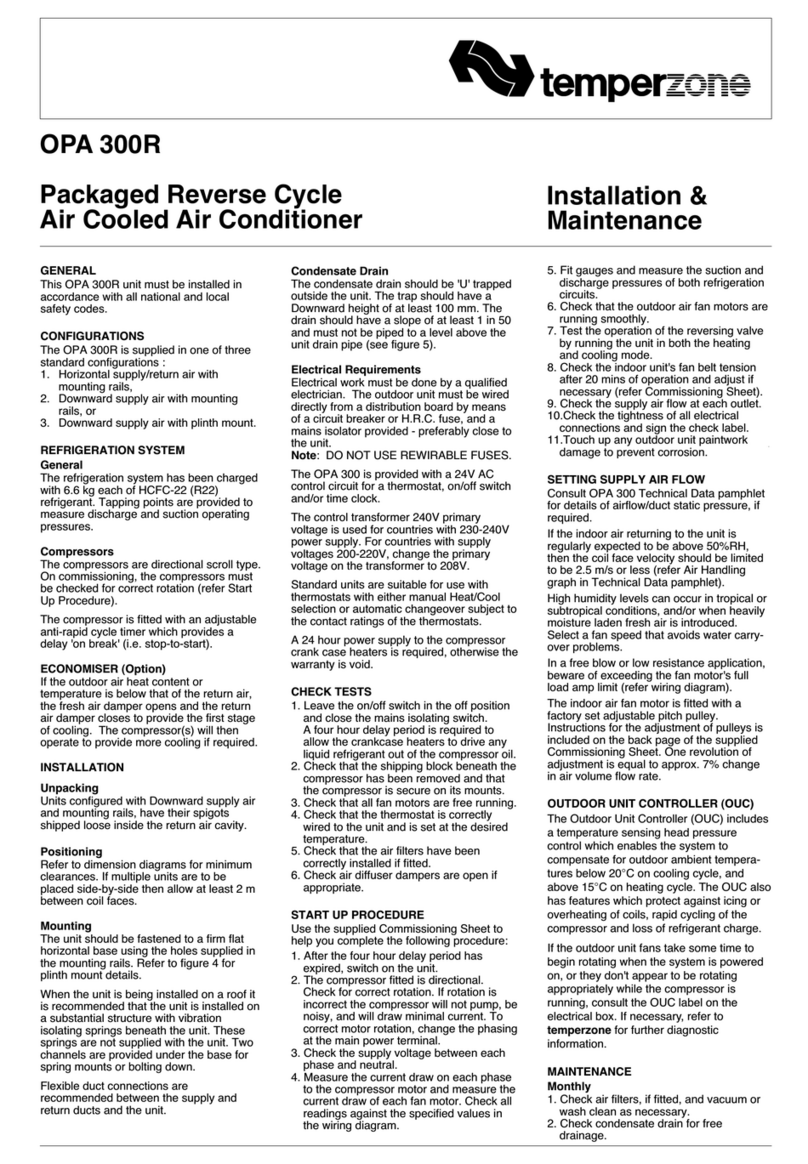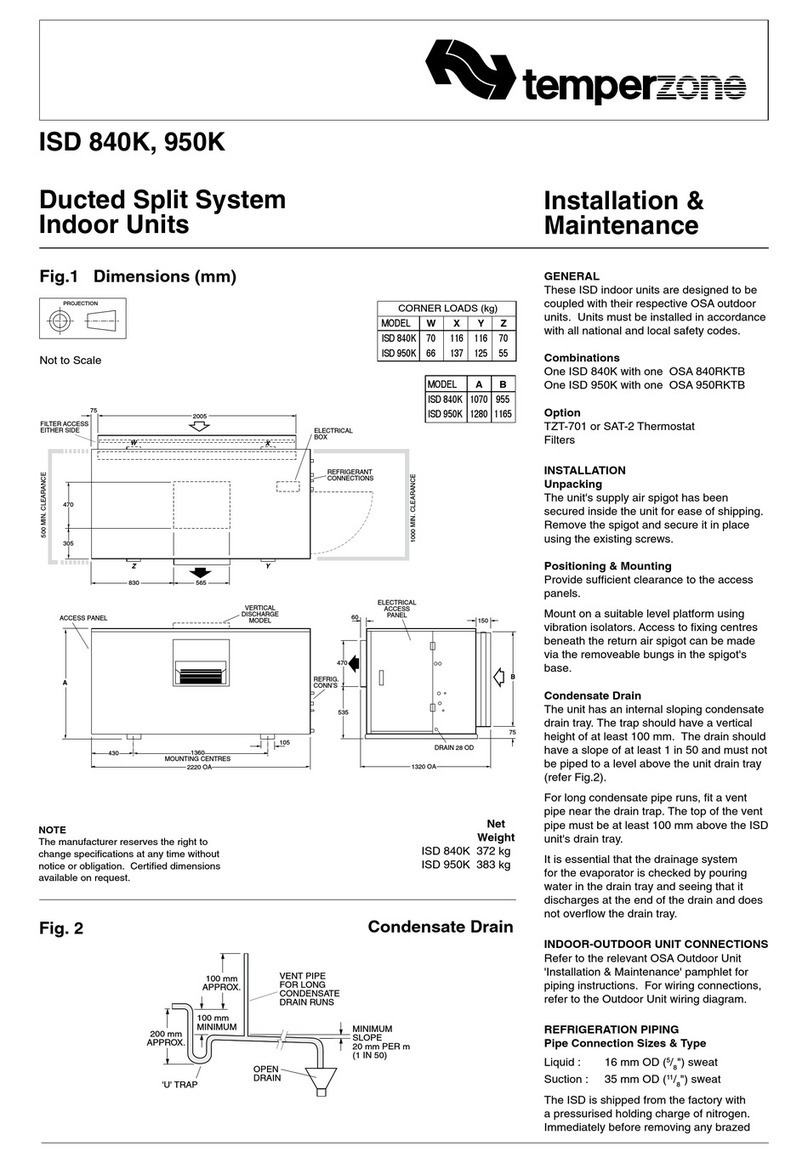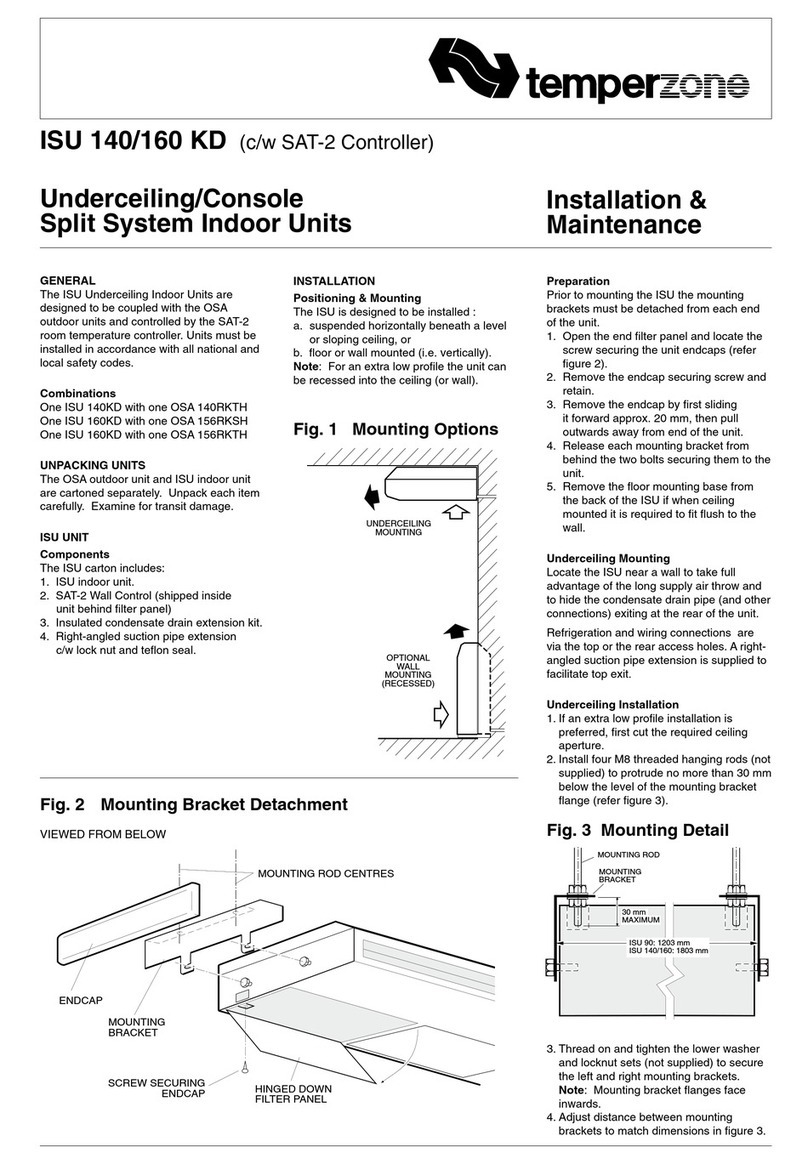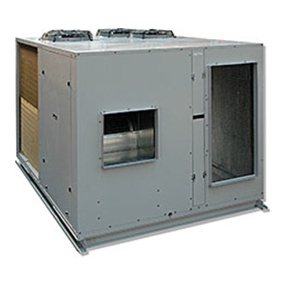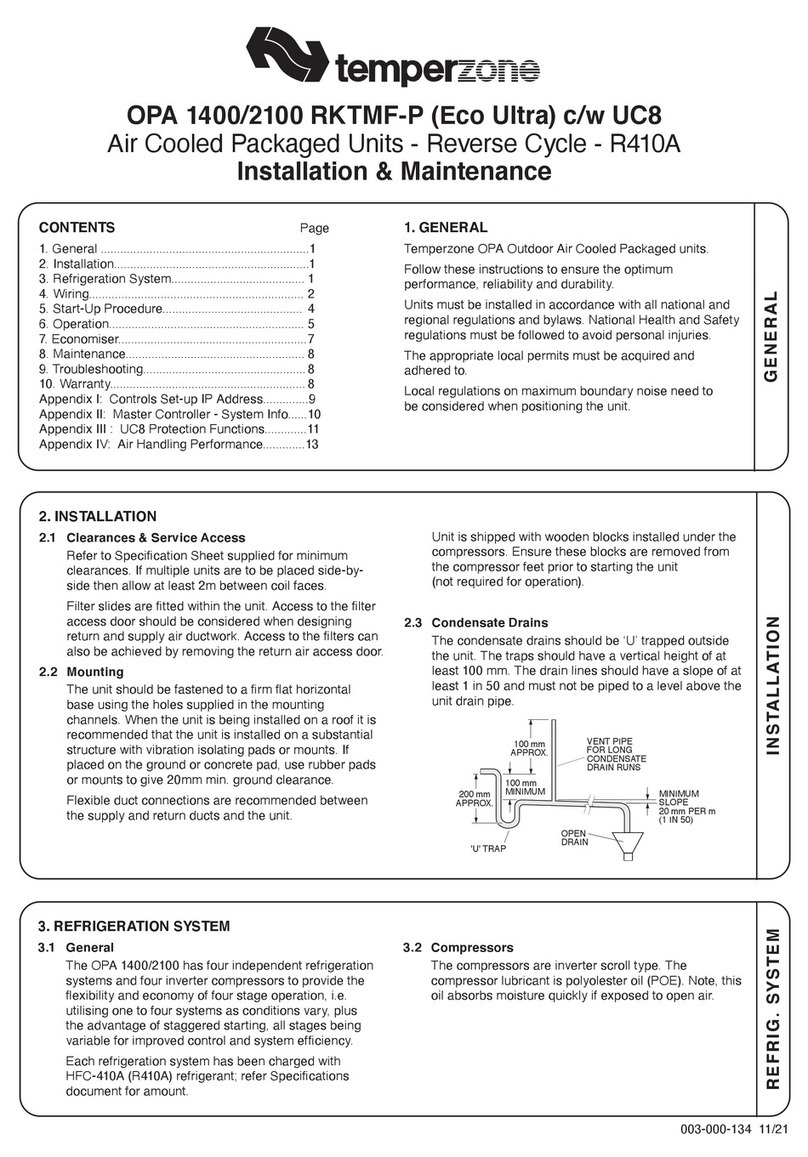REFRIGERATION PIPING
Pipe Connection Sizes & Type
Liquid : 13 mm OD (1/2") sweat
Suction : 22 mm OD (7/8") sweat
The ISD is shipped from the factory with
a pressurised holding charge of nitrogen.
Immediately before removing any brazed
pipe connection's seal, reduce holding
charge to atmospheric pressure.
Warning: Failure to do so may cause injury.
Refer to the Outdoor Unit 'Installation &
Maintenance' pamphlet for evacuation
procedure and piping requirements.
ELECTRICAL WIRING
The electrical supply required (via the
Outdoor Unit) is specied on the Outdoor
Unit's wiring diagram.
Electrical work must be carried out by a
qualied electrician in accordance with local
supply authority regulations and the wiring
diagram.
In a free blow or low resistance application,
beware of exceeding the fan motor's full
load amp limit (refer Outdoor unit's wiring
diagram).
If 'Indoor Fan Off During De-ice' is a
requirement, refer to the outdoor unit's
installation instructions.
INDOOR FAN SPEED
The indoor fan speed can be 'Stepped' or
'Continuously Variable'. The choice is made
using Switch 1 of 'DIP1' on the EC Motor
Controller (one at each end of the unit).
Switches 1 to 5 on 'DIP2' determine the
minimum and maximum fan speeds.
The same 'Minimum rpm' and 'Maximum
rpm' settings apply to 'Stepped' and
'Continuously Variable'.
The default settings for DIP1 and DIP2 are
highlighted on the Wiring Schematic.
1. Stepped (DIP1 switch 1 = OFF)
Connecting the 24V AC power from the
unit’s 'HOT 24V' terminal to one (and only
one at a time) of the 'LOW 24V' / 'MED
24V' / 'HIGH 24V' terminals, selects the
'LOW' (Min. rpm), 'HIGH' (Max. rpm), or
'MED' (mid-way between) fan speed. The
transitions between speeds are smooth.
2. Continuously Variable (DIP1 switch 1=ON)
When using this method a temperzone
Analog Signal Isolator (No. 201-000-129)
must be tted and connected as shown
in the wiring schematic. 24V AC or DC
power from the external (BMS) controller
should be provided to the '24V' and '0V'
input terminals of the Signal Isolator
board.
A voltage below 2V DC applied across
the '0V' and the '0-10V' input terminals
(labelled 'From BMS Controller' in the
wiring schematic) of the Signal Isolator
will stop the indoor fan. A control voltage
of slightly more than 2V will cause the fan
to run at the 'Min. rpm' speed. A 10V DC
signal will run the fan at the 'Max. rpm'
speed. Control voltages between these
two limits can be used to achieve any
desired speed between 'Min.' and 'Max.'
rpm.
Do not use switch combinations
marked with 'DO NOT USE' in the
Speed Selection table.
If the air returning to the indoor unit is
regularly expected to be above 50%RH,
then the coil face velocity should be limited
to be 2.5 m/s or less (refer Air Handling
graph in Technical Data pamphlet).
High humidity levels can occur in tropical or
subtropical conditions, and/or when heavily
moisture laden fresh air is introduced. Select
a fan speed that avoids water carry-over
problems.
COMMISSIONING
Indoor Unit
1. Check that the thermostat is
correctly wired and set at the desired
temperature.
2. Check that any air lter (if tted) is
clean.
3. Check that the fan runs freely without
vibration.
4. Check condensate drain for free
drainage.
5. Run the unit in cooling and heating
modes.
MAINTENANCE
Weekly For First Four Weeks
1. Check air lter (if tted); vacuum clean as
necessary.
2. Check condensate drain for free
drainage.
Monthly
Check air lter (if tted); vacuum clean as
necessary.
Six Monthly
1. Check condensate drain for free
drainage.
2. Check heat exchanger coil; vacuum or
brush clean as necessary.
3. Check the tightness of the fan.
Fig. 2
